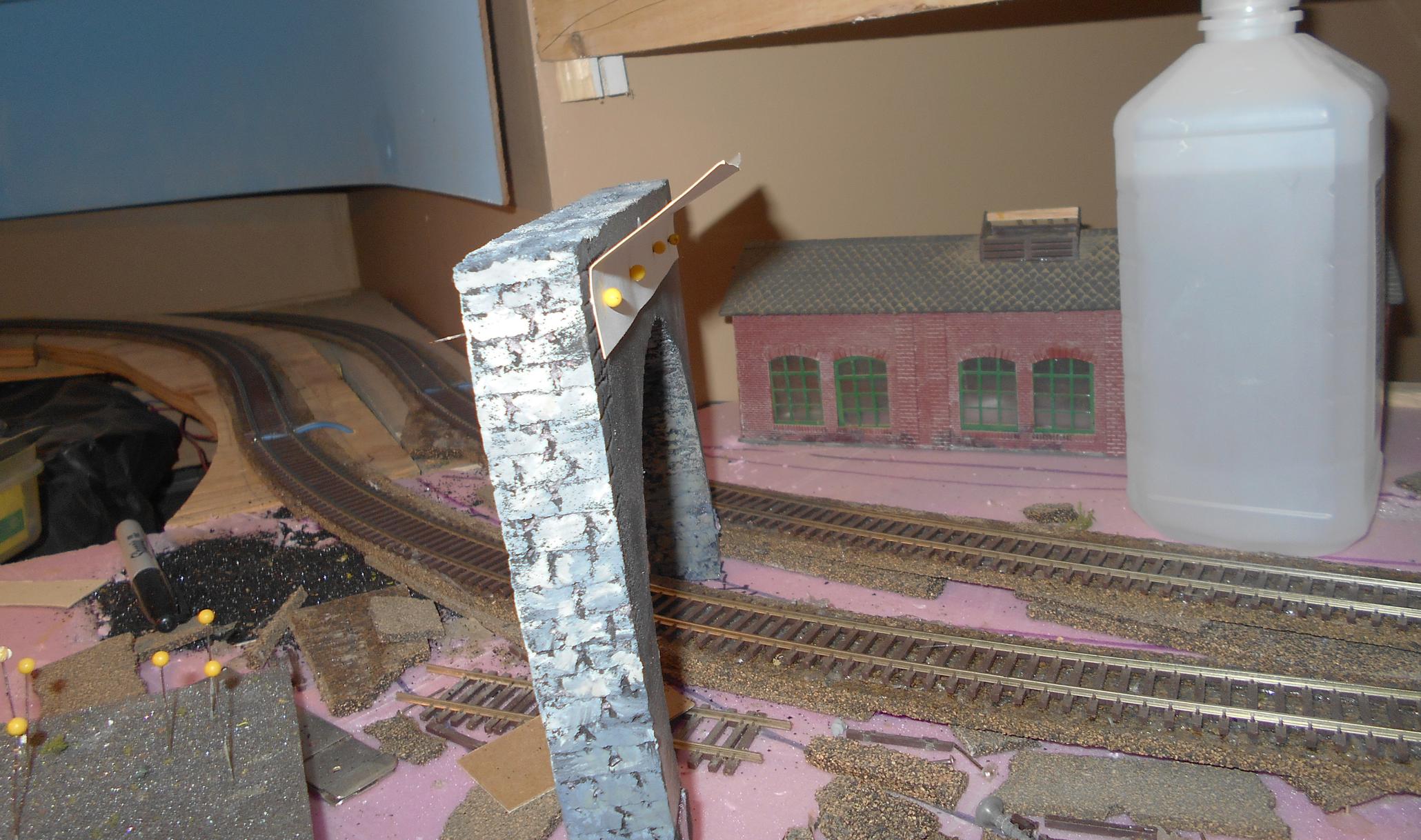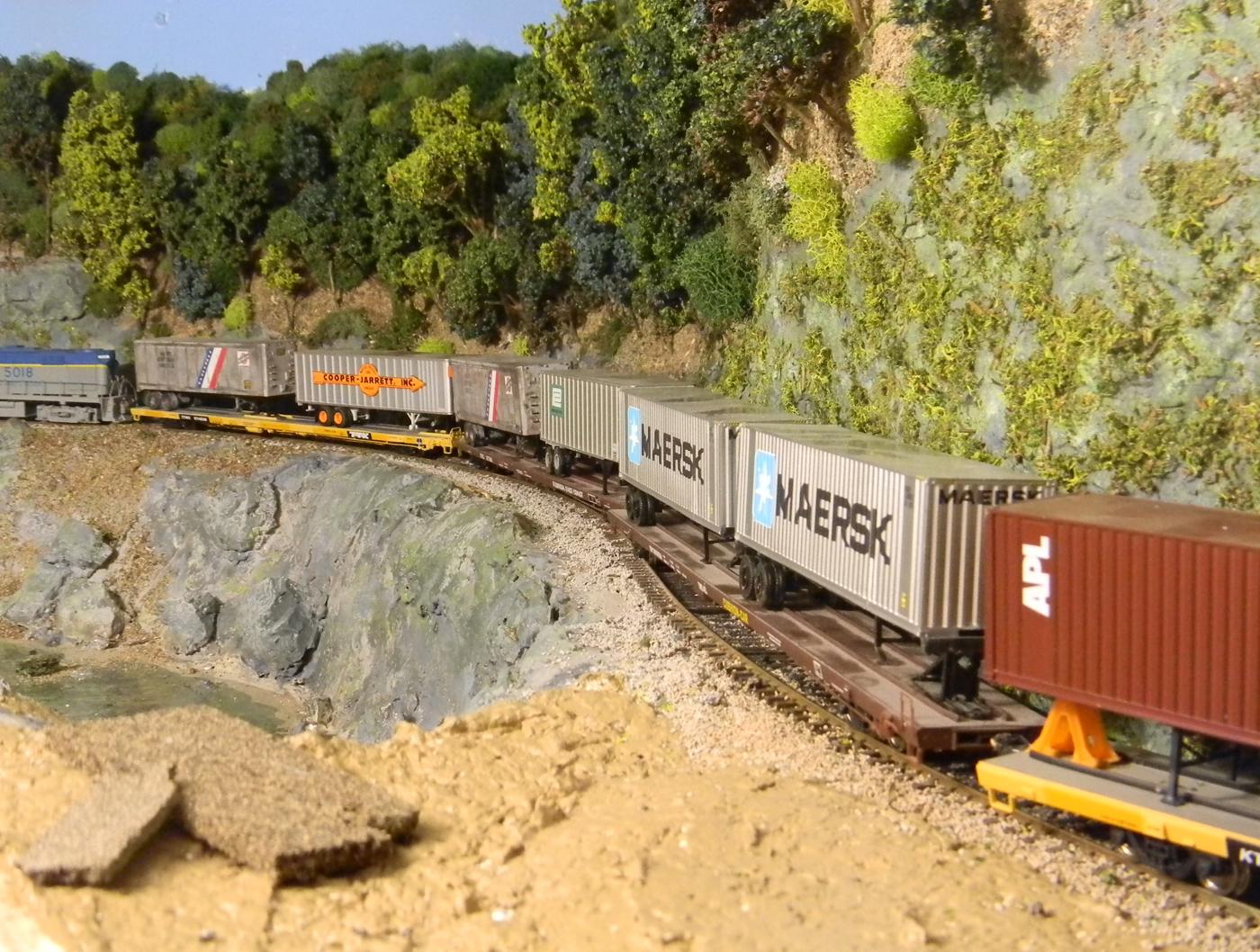The last few days of work on the railroad have been distinctly frustrating, but it's just another example of "You live, you learn!"
I've been dressing up the last of the ballast work, and that gave me a chance to run trains over my new ballasted track.
Been there?
The track sections that begin the northbound run up the Mud Run curve are the most risky part in the design of my layout. Mud Run has the tightest curvature on my layout, and the amount of space dictated the tightness. There's a track running on the outside of the curve just inside the mountain scenery that runs downward to the storage area, and both tracks begin that section by making an S-curve to get around the corner of a wall. By the time they complete the horseshoe curve, there's just enough room under the upward track to have the downward track pass directly underneath it at 2% grades for each. When I was laying track in 2009, I spent a lot of time working out the optimal arrangement of track to discourage derailments. There's a shot from 2020 below showing the track before all of the scenery went in. The track on the right side nearest the wall runs downward, the one of the left upward.

You may remember that over the previous few weeks I've been engaged in the process of weathering the track in this area and adding ballast. Two innocent tasks that if done correctly, shouldn't change the behavior of trains passing over the rails. That tight S-curve got me good. I'd ballasted that section one night and came back the next night and found that the track has risen slightly off the roadbed. I'd glued it down with a layer of silicone, but I suspect the alcohol I laid as a whetting agent freed up the track. No problem. I couple of pin vise holes, a few track nails and it went right back down. Unfortunately, I didn't pay much attention to making sure the track went right back down in the original location (side to side) before re-ballasting.
Running trains was one disaster after another. Had a locomotive that derailed at a joint in the track and 89' flat cars whose trucks were lifting free of the track just in time to try to reverse directions in the S-curve. Crashes as trailers fell off flat cars, locomotives jammed into scenery.
All of this made me quite grumpy (I usually go through life with a smile on my face and a "glass is half full" mentality). The big problem is that I could only blame the guy in the mirror. I knew what I'd done, and I knew how to fix it, but it just meant getting out putty knives and pliers and laying waste to ballast, track and roadbed that were already hardened in place, and ultimately it would mean time and effort to redo something that was already "complete". Wah!
To make matters worse, my D&H consist of 4 locomotives that I was using for the track checkout was not right. Had a decoder in one of them that seems to go into LaLa land and forget its address. Had another one who's headlight was always on. A third wasn't consistently picking up the track voltage. Wah!
I decided that today would be a day to get things straightened out and RIGHT.
First I worked on the track issues with a dependable consist pulling my flat cars. Removed those track nails and worked on getting the track orientation right going around the curve and paying special attention to the side-to-side cant of the track around those curves. I still have the redress the ballast at the reconstruction areas, but I did try only to disturb small areas - won't be that bad.
Then I worked on the troublesome locomotives. Reset the decoders back to factory settings and worked up from there. Pulled a shell off one of them and did a tape wrap around the decoder to help secure it. Ran them singly and found some dirty track that was affecting some of them, consisted them together and ran them again, and when all was said and done, ran the Apollo around the layout and got the camera out.

There are the things you WANT to do, but sometimes, the things you HAVE to do take precedence. All's well that ends well.




 .
.
